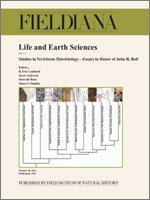The inner ear is a complex structure consisting of the vestibular and auditory systems. Across vertebrates, morphological variation in the inner ear provides a source of homologous features (characters) that may aid in resolving phylogenetic relationships. The morphology of the inner ear in extant frogs and salamanders is well known, and has been extensively studied from functional perspectives. However, the ability of its form and features to shed light on the broader question of lissamphibian origins and relationships has not been as thoroughly explored. Herein we review the morphology of the inner ear of the least well-known lissamphibian group, the caecilians, and present three-dimensional reconstructions of otic capsule endocasts and of soft-tissue labyrinths. We use these data to explore previous statements about the structure of the caecilian inner ear and its evolutionary significance. The postulate that the periotic canal has a posterior path is corroborated, and the periotic sacs of each ear are observed to extend into the brain cavity, where they are applied to a fluid-filled compartment that is located ventral to the brain. These features are shared with frogs and salamanders. Additionally, it is hypothesized that the regression of two endorgans in caecilians is correlated with the secondary loss of the two middle ear auditory pathways, the tympanum–stapes and opercularis hearing pathway, suggesting that the lissamphibian-type ear is present, but in a derived state in caecilians. Identification of osteological correlates of this lissamphibian-type ear permits the interpretation of the evolution of this distinct ear type in the context of the three competing hypotheses of lissamphibian phylogeny. The distribution of traits is shown to be most parsimoniously explained when optimized onto the phylogenetic pattern that incorporates a monophyletic temnospondyl-derived Lissamphibia. This interpretation is consistent with a single origin of a lissamphibian-type tympanic ear. Therefore, characters of the ear seemingly provide synapomorphies that unite lissamphibians with amphibamid temnospondyls, potentially improving the resolution of concepts about the affinities of frogs, salamanders, and caecilians and clarifying issues of tetrapod ear evolution.
How to translate text using browser tools
18 October 2012
Evolution of the Amphibian Ear with Implications for Lissamphibian Phylogeny: Insight Gained from the Caecilian Inner Ear
Hillary C. Maddin,
Jason S. Anderson
ACCESS THE FULL ARTICLE
It is not available for individual sale.
This article is only available to subscribers.
It is not available for individual sale.
It is not available for individual sale.





